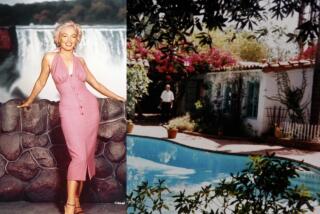GLENDALE : Officials to Vote on Goode House Project
- Share via
The Glendale Housing Authority is scheduled to vote today on whether to spend $30,000 to place support beams under the historic Goode House to protect its foundation from possible damage during a natural disaster.
City officials bought the early 1890s Victorian-style home on Cedar Street in 1992 for $723,869, said Madalyn Blake, director of community development and housing. But it has since remained vacant and boarded up, pending plans to put housing for the disabled on the site.
Earlier this year, architectural consultants for the city determined that the building’s brick foundation could shift in an earthquake or heavy flooding. They proposed a temporary support system that would act like an additional leg placed under a wobbly table.
A construction crew would set up wood blocks in rows across the bottom of the Goode House. Steel beams would then be placed horizontally on top, sandwiched by one final wood block, said Jerry Wasser, a city planner.
City officials say the backup support would remain until at least next summer, when the Goode House is expected to be restored as part of a 22,500-square-foot housing project with the Crippled Children’s Society of Southern California Inc.
That plan calls for the Housing Authority to spend an estimated $450,000 to remodel parts of the Goode House into an office, a library and a television viewing room for the disabled.
In turn, the Crippled Children’s Society is expected to obtain federal money to pay for construction of a U-shaped apartment complex for the mentally and physically disabled. The building would wrap around all but the front side of the Goode House.
Meanwhile, if the Housing Authority approves the temporary support plan, funding would come from the Glendale Redevelopment Agency, Blake said. The agency is required by the state to set aside 20% of its budget for affordable housing projects.
The Goode House is named after Edgar Douglas Goode, who came to Glendale in 1897 and became active in the city’s development and transportation issues. He lived in the Cedar Street house until 1917 when he moved to the Imperial Valley, Wasser said.
More to Read
Sign up for Essential California
The most important California stories and recommendations in your inbox every morning.
You may occasionally receive promotional content from the Los Angeles Times.













